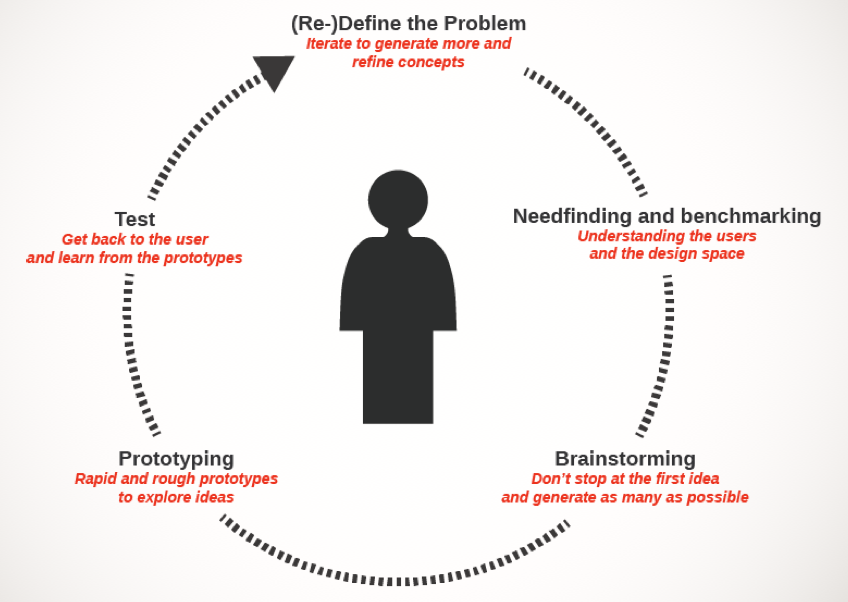
Unlike most other engineering design courses, Design Thinking requires the students to get out into the field and interview users to understand people’s real needs and values as well as thoroughly benchmark existing products and technologies. By understanding the past and present, the students are able to design what the future can be.

Another feature of Design Thinking, which is special to it, is cyclicity. By going through the process multiple times, not only does it maximize student learning, it maximizes project learning and the quality and depth of user insights, to ensure breakthrough solutions. The iterative nature assures that teams are not stuck on one idea for too long and that ideas are being continuously validated with end users through rapid prototyping and testing. “Fail early and fail often so you can succeed sooner,” is one of the key mantras for our students.
In facing the challenges of innovation, our teams closely interact and collaborate with their corporate partners, generating a culture of participation that foster the exchange of ideas, knowledge, and enthusiasm.
Opportunities to innovate at Ingegneria Reggio Emilia are multiple and compelling, as we run three diverse programs:
» ME310/SUGAR in partnership with Stanford University
» CBI - Challenge Based Innovation in collaboration with CERN (Geneva)
» Embedded Design Thinking as a closer collaboration with companies.